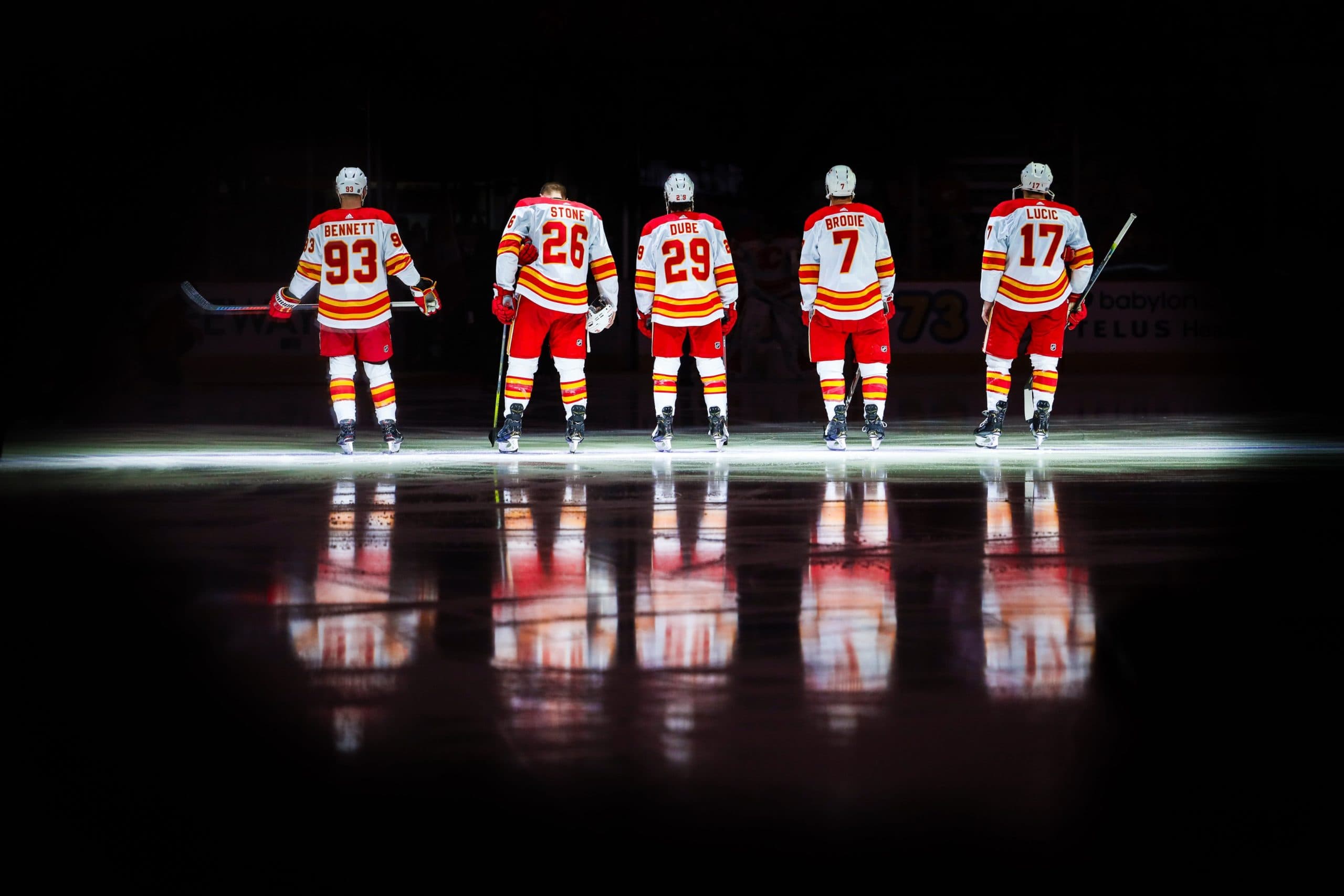Nation Sites
The Nation Network
FlamesNation has no direct affiliation to the Calgary Flames, Calgary Sports and Entertainment, NHL, or NHLPA
The Hall of Fame case for Theoren Fleury

Photo credit: Sergei Belski/USA Today Sports
It’s that time of year, folks. While the ongoing COVID-19 pandemic has thrown everyone’s lives and plans into disarray, there’s one thing that hasn’t been disrupted: the annual Hockey Hall of Fame deliberations. The 18 members of the induction committee will have their 2020 selections announced on Wednesday afternoon.
We’re making the case for a few former Calgary Flames. Last but not least? Theoren Fleury.
The case for Fleury
If you grew up in Calgary and were a hockey fan during the 1990s, Fleury was probably your favourite player. A pip-squeak in the land of giants, especially during the clutch and grab era of that decade, Fleury managed to become one of the decade’s defining offensive players. He did this by basically battling and scrapping on every shift: of all the NHL players with 1,000 points, Fleury is one of just 34 who also amassed 1,000 penalty minutes. (His 1,840 career PIMs put him sixth among all 1,000-point players.) A quote attributed to baseball great Ty Cobb noted that baseball was “not unlike a war,” and that’s how Fleury seemed to approach every game.
Despite being small, Fleury amassed 1,088 points in 1,084 games. His 455 goals is 58th all-time. His 1,088 points is 68th. His 674 even strength points are 74th. Among all players with 1,000 games played or more, he’s one of just 33 who generated offense at a point-per-game pace (or higher).
Over at TSN, Frank Seravalli outlined the case for Fleury rather succinctly:
Fleury, who turns 52 next week, is one of just 15 players in NHL history to average more than one point per game in both the regular season and the Stanley Cup playoffs. The other 14 are all enshrined in the Hall.The 5-foot-6 Fleury was one of the smallest NHL players of his generation, but he bobbed and weaved through a league of giants, becoming a fan favourite in Calgary for his fearless and feisty attitude. He originally gained notoriety and popped up on NHL radars for his central role in the “Punch-up In Piestany” at the 1987 World Junior Championship.Fleury hit 50 goals once, joined the century points club twice, earned a second-team all-star selection in 1994-95 and twice finished in the top five in Hart Trophy balloting.
Fleury won a Turner Cup, a Stanley Cup, Olympic gold, World Junior gold and a Canada Cup.
The case against Fleury
Seravalli also outlined some of Fleury’s challenges:
Fleury’s book revealed in disturbing detail the sexual abuse that predator Graham James subjected him to for years. James was supposed to be the mentor to the undersized minor hockey player from rural Manitoba with an alcoholic father and drug-abusing mother.“The direct result of my being abused was that I became a [bleeping] raging, alcoholic lunatic,” Fleury wrote.
In part because of all the trauma he had to live through and potentially because he’s just out-spoken, Fleury has rubbed a lot of people in hockey the wrong way. Simply put: some people think he’s a jerk. But if you look around sports, it’s full of jerks who are great at sports. Depending on what source material you read, the aforementioned Cobb was either a racist or a huge jerk. He was a great baseball player and got into Cooperstown in 1932 almost unanimously. Baseball’s Hall of Fame is full of many violent, drunk men with what we would now call utterly repugnant views on race, gender and any number of things.
The Hockey Hall of Fame isn’t full of saints, either. Martin Brodeur infamously left his wife for his sister-in-law. Greats like Ed Belfour, Grant Fuhr and Tim Horton (among others) struggled, like Fleury, with substance abuse. Hockey, like life, is full of flawed people who find ways to excel at sport.
Fleury played hockey like he was being chased by his demons, and we might never know how good he could’ve been had he not been so tormented by his off-ice issues. That said, despite these issues he put up all-time numbers. He deserves serious consideration for induction into the Hall.
Breaking News
- Instant Reaction: Flames overcome Kraken with third period push
- What’s Going On In the Pacific Division: Five teams in the division occupy a playoff spot
- Throwback Thursday: Looking at the Calle Järnkrok trade with the Kraken
- Flames injury news: Jake Bean to undergo surgery, out ‘indefinitely’
- Flames roster news: Dryden Hunt placed on waivers in advance of holiday roster freeze, Justin Kirkland called up
